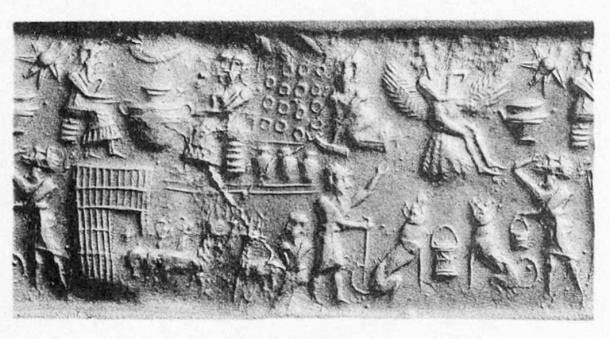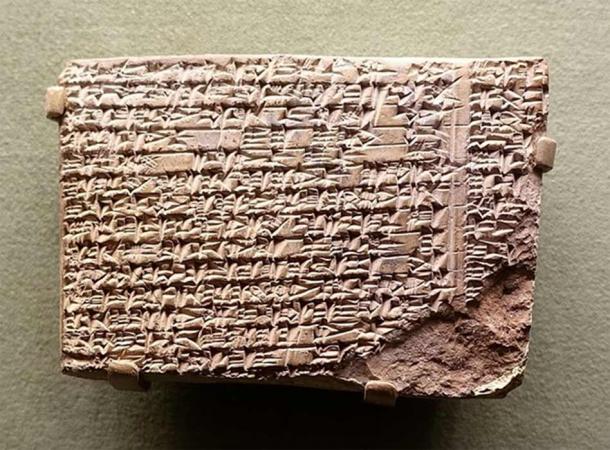The Biblical Enoch corresponds to a remarkable degree with the figure of Etana in Sumerian tradition. It seems reasonable to assume that they belong to the same original tradition handed down in the stories about Enoch and those about Etana, respectively. Their stories are, in fact, not the only ones showing close agreement between stories from Sumerian tradition and stories from biblical tradition.

The Myth of Etana. Seal impression of the Akkadian Empire period. ( Public Domain )
Students of ancient history have observed that there are many distinct correspondences between the ancient Sumerian and biblical traditions. It has been suggested that the Mesopotamian material found in the biblical Book of Genesis belongs to a common tradition that could be tracked back to Sumer. According to the Bible, the principal patriarch of Israel, Abraham, lived in Sumer before migrating to Harran and from there on to Canaan. In the Bible the land of Sumer is called Shinar and some biblical stories are located and play out there.
The Myth Of Etana
One of the fascinating personages of biblical tradition is Enoch, who “ walked with God and was no more for God took him .” What is interesting about Enoch is that the tradition about him is very old, going back to ancient Sumer where one finds a corresponding figure in Etana. Etana was remembered in Sumerian tradition as the very first king to have ruled in Sumer, in the city of Kish. In the well-known Sumerian King List , Etana is portrayed as belonging to the House of Kish, which was a Semitic dynasty that ruled to the north of Sumer over the city of Kish. A fascinating story is told about Etana, how he took a ride on the back of an eagle to the abode of the supreme god, An. It is called the Myth of Etana .

Fragment of the Myth of Etana. Morgan Library & Museum – New York City ( Public Domain )
According to this myth a serpent and an eagle respectively lived at the bottom and in the top of a large tree. The peace between them was guaranteed by an oath they swore to the sun god, Samas, the Akkadian equivalent of the Sumerian sun god, Utu. One day, while the snake was away, the eagle devoured its little ones. The snake then called for revenge upon which Samas helped him to catch the eagle.
Like this Preview and want to read on? You can! JOIN US THERE ( with easy, instant access ) and see what you’re missing!! All Premium articles are available in full, with immediate access.
For the price of a cup of coffee, you get this and all the other great benefits at Ancient Origins Premium. And – each time you support AO Premium, you support independent thought and writing.
Dr Willem McLoud is an independent South African scholar whose main interests are ancient Middle Eastern studies, Kantian philosophy and philosophy of science. Willem’s main areas of study regarding the ancient Middle East are the Sumerian, Akkadian and early Egyptian civilizations, with special focus on the Uruk and Akkadian Periods in Mesopotamian history as well as the Old Kingdom Period in Egyptian history.
Top Image : Sumerian Tree of Life ( swisshippo/ Adobe Stock )
 RSS Feed
RSS Feed















 May 4th, 2021
May 4th, 2021  Awake Goy
Awake Goy  Posted in
Posted in  Tags:
Tags: 













